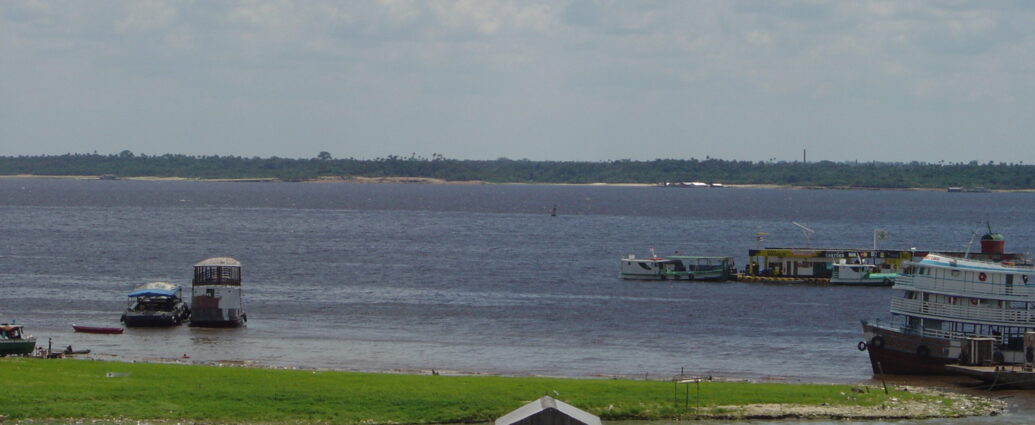Teguan Harris
A major drought in Brazil has left boats stranded, fish dead and essential resources inaccessible to indigenous Amazonians.
What’s Happening In Brazil?
Amid a severe drought, Brazil’s Amazon Port in Manaus has recorded its lowest water level since 1902, leaving boats stranded and remote villages unable to access basic resources.
Falling water levels are estimated to have killed thousands of native fish and at least 141 dolphins, with the decimation of rivers leaving indigenous Amazonians unable to use the water for survival.
“We ask the government to declare a climate emergency”
Apiam, an indigenous group and umbrella organisation representing 63 tribes in the Amazon, has warned that the water in the muddy streams and tributaries of the Amazon River has become undrinkable due to the drought.
In a news conference last week, Apiam said, “We ask the government to declare a climate emergency to urgently address the vulnerability Indigenous peoples are exposed to.”
High temperatures and rainfall below the historic average have contributed to the 120-year low in river levels. The extreme weather is thought to be caused by the El Niño weather phenomenon, which has placed pressure on the region.
The El Niño phenomenon also contributes to the warming of the Pacific Ocean, which weather experts note has increased at a greater rate than normal this year.
Wilson Lima, the governor of Amazonas, said: “It is the worst drought in history.”
Extreme drought has isolated rural communities and killed many thousands of animals in Amazonas Brazil.@wcsbrasil1 Director Carlos Durigan says team has never seen such extreme conditions. Nature must be a part of the solution, he adds. https://t.co/CtsNgNwIQI
Via @TheWCS pic.twitter.com/ltBQp1u8aj
— UN Biodiversity (@UNBiodiversity) October 26, 2023
Brazil Drought Breaks Records
The Rio Negro River has recently recorded a water level of 13.59m (44.58 ft), the lowest level of water since records began in 1902.
The Rio Negro is the second largest tributary in Manaus, Amazon’s capital, and drains around 10 per cent of the Amazon basin. It is alsothe world’s sixth-largest river by water volume.
Water levels have fallen by an average of 30 centimetres since the middle of September, while temperatures in the Amazon have reached a record of 39°C (102°F), according to The Port of Manaus website.
Another main tributary of the Amazon, the Madeira River, has also recorded historically low levels, causing the halt of the Santo Antonio hydroelectric dam.
The low water levels of the Madeira River have isolated the surrounding indigenous villages and non-indigenous communities that rely on the rainforest to collect fruit but cannot move their produce out.
Throughout Brazil’s Amazon, low river levels have left hundreds of riverine communities secluded and struggling to get access to drinking water and basic supplies.
Additionally, the drought has disturbed commercial navigation that supplies Manaus.
Not sure if everyone has seen what is happening in the Amazon River. 13m of water in the lower Rio Negro is unbelievable!
Amazon River falls to lowest in over a century amid Brazil drought https://t.co/z72CL9wGqs
— Bruno Melo (@brunfmelo) October 19, 2023
Declaring A Climate Emergency
Brazil’s drought has destroyed rivers and natural habitats, cutting the Amazonian’s access to drinking water as well as causing forest fires across the Amazon.
“It is not just the El Niño current. Deforestation continues with these fires.”
Apiam coordinator Mariazinha Bare explained, “The smaller rivers have dried up and turned to mud.”
“Indigenous people have to walk long distances in the rainforest to find potable water, and the poor quality of water is making people ill.”
“The most serious problem for indigenous communities that have no running water is sanitation now that the river water cannot be drunk,” Bare said.
“Impassible rivers have made it harder for medical assistance to reach Amazon villages.”
Ivaneide Bandeira, who leads the Kaninde Indigenous organisation in the state of Rondonia, stated that isolated non-indigenous communities were asking Indigenous villages for food.
She also brought attention to forest fires affecting the area during a period of high temperatures and low rainfall.
Bandeira has said that the smoke from the fires was “worse than ever,” aggravating the climate crisis and affecting the health of the elderly and children.
“It is not just the El Niño current. Deforestation continues with these fires.“
“The agricultural advance does not stop. They are destroying everything as if they do not see what is happening to nature.”
Indigenous Amazonians urge Brazil to declare emergency over severe drought
Drought and heatwave has killed fish in rivers as Indigenous group Apiam says villagers have no water, food or medicinehttps://t.co/hfxkc08dYW— Celeste George (@cie1947) October 11, 2023
What Now?
Brazil’s Environment Minister, Marina Silva, has stated that the government is preparing a task force to provide emergency assistance to the Amazon region that the drought has affected.
Tens of thousands of food parcels have been sent to communities isolated by the lack of river transport.
“The impact [of the drought] on the environment is enormous and frightening,” Silva told Reuters. “We have a very worrying situation.
“This record drought has disrupted river transport routes, threatening food and water shortages, and a large fish mortality is already beginning.
“We are seeing a collision of two phenomena, one natural, which is El Niño, and the other a phenomenon produced by humans, which is the change in the Earth’s temperature,” she said.
Since the drought began in September, more than 481,000 people have been affected. As it persists, public authorities in Brazil continue to attempt to deliver aid to thousands of isolated communities.
READ NEXT:
-
THOUSANDS MARCH IN NEW YORK IN LARGEST CLIMATE PROTEST SINCE THE PANDEMIC
-
AT WAR WITH WILDFIRES: THE CLIMATE IN GREECE
-
ENVIRONMENTAL GROUPS WARN RISHI SUNAK OVER CLIMATE BACKSLIDING
Featured image courtesy of Washington Lins via Flickr. No changes were made to this image. Image licence found here.

